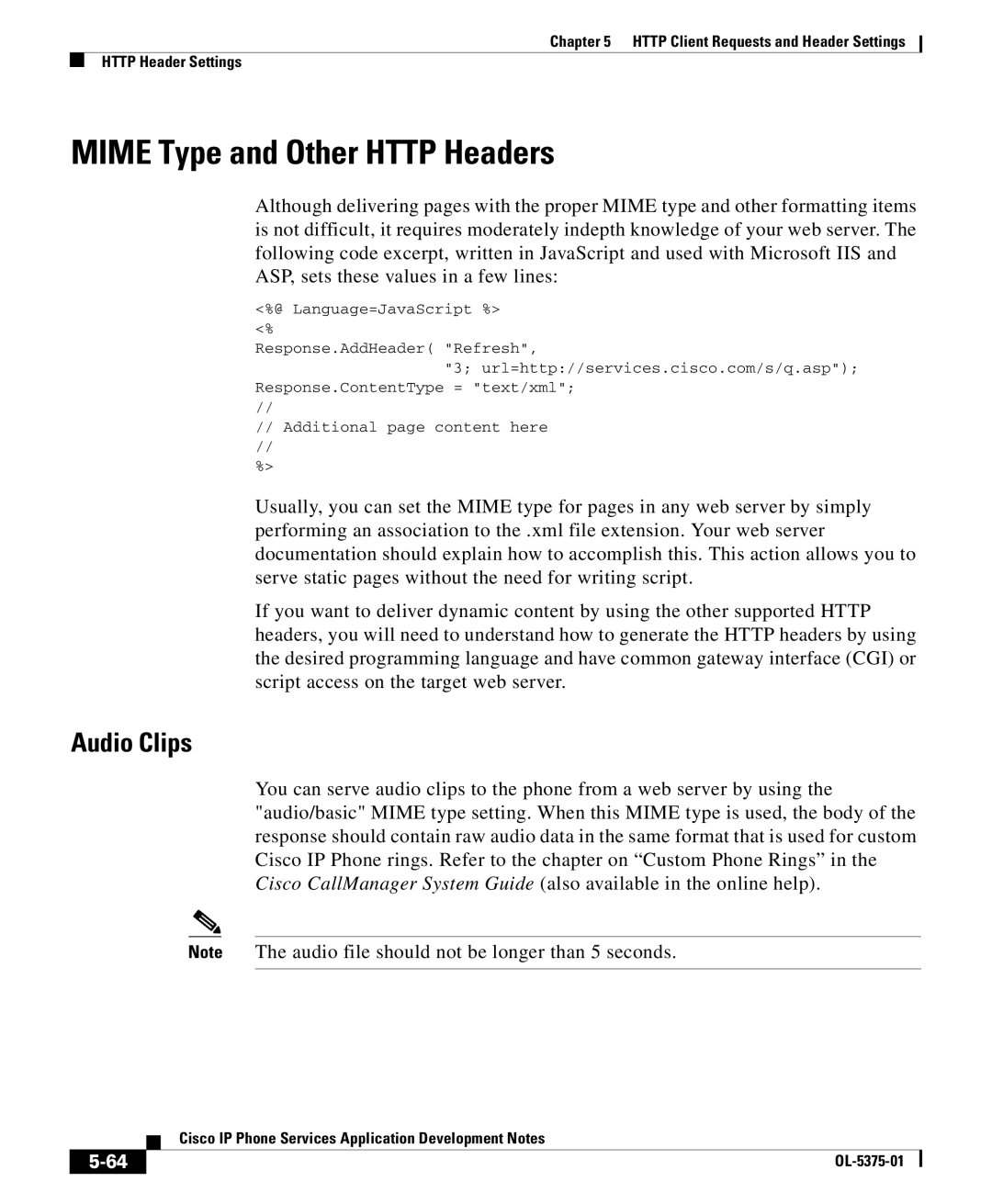
Chapter 5 HTTP Client Requests and Header Settings
HTTP Header Settings
MIME Type and Other HTTP Headers
Although delivering pages with the proper MIME type and other formatting items is not difficult, it requires moderately indepth knowledge of your web server. The following code excerpt, written in JavaScript and used with Microsoft IIS and ASP, sets these values in a few lines:
<%@ Language=JavaScript %> <%
Response.AddHeader( "Refresh",
"3; url=http://services.cisco.com/s/q.asp"); Response.ContentType = "text/xml";
//
//Additional page content here
%>
Usually, you can set the MIME type for pages in any web server by simply performing an association to the .xml file extension. Your web server documentation should explain how to accomplish this. This action allows you to serve static pages without the need for writing script.
If you want to deliver dynamic content by using the other supported HTTP headers, you will need to understand how to generate the HTTP headers by using the desired programming language and have common gateway interface (CGI) or script access on the target web server.
Audio Clips
You can serve audio clips to the phone from a web server by using the "audio/basic" MIME type setting. When this MIME type is used, the body of the response should contain raw audio data in the same format that is used for custom Cisco IP Phone rings. Refer to the chapter on “Custom Phone Rings” in the Cisco CallManager System Guide (also available in the online help).
Note The audio file should not be longer than 5 seconds.
| Cisco IP Phone Services Application Development Notes |
